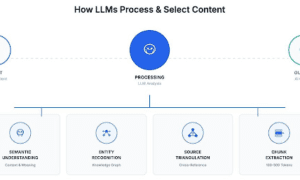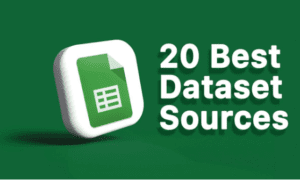Nowadays, timely delivery of accurate B2B customer data fuels GTM efforts and underlies sustained revenue growth for enterprises of all sizes. That said, the origin of third-party B2B data remains an enigma for most salespeople and marketers out there. It provokes misconceptions about ample and revenue-contributing data and what data vendors offer are most worthwhile.
Let’s fill the knowledge gap and peek under the hood of the B2B data supply chain. Our guide will help you manage external data sources purposefully without falling for marketing buzzwords.
How Disparate Customer Data Makes It to the Vendor?
Third-party data vendors are merely another link in the B2B data supply chain, as their proprietary data sets are often formed by external providers that let them into ownership. For instance, it’s reasonable to suggest that Clearbit’s firmographic data isn’t collected directly. Many analysts and insiders said that web scrapers like Xverum, Oxylabs, LeveData, and MixRank back it up.
So, basically, when you buy data sets from an authorized B2B data vendor, you pay for their efforts to keep audience data validated, consistently formatted, and ready to use. That leads us to a crucial conclusion: switching between providers doesn’t necessarily mean that you’ll access deeper data profiles and broader databases. Data provider A might mine data from the same pool of web scrapers. So, quite often, the difference boils down to opting for an offer that balances use convenience and subscription cost.
Embrace the Imperfectness of Third-Party Data
B2B marketers should be disillusioned from the start: none of the data vendors can provide 100% accurate and comprehensive customer records. Even the most authoritative sources, like LinkedIn and ZoomInfo, have certain inconsistencies and gaps due to how they collect and process data.
Concede to this harsh truth and lower your expectations from your data-driven GTM efforts. Also, try to map the minimum viable data profile that should grant you success in specific marketing and sales activities. Do you need to match your LinkedIn high-value prospects with their Facebook profiles? Then, look for ways to cross-match member profiles of these paid social networks and serve targeted B2B ads on Facebook to the same audiences engaged with your sponsored posts and ads on LinkedIn.
Tapping into B2B data enrichment will help you fetch missing ad network identifiers, such as personal email and phone numbers, so your list-based audiences meet a higher reach rate on Facebook.
Get Pragmatic About Your B2B Data Use
Now that you acknowledge and accept that no third-party data is perfect, you need a pragmatic framework that can help you squeeze the lemons regardless of what marketing intelligence tools you use.
First, align your data profiling, sourcing, and enrichment with the Ideal Customer Profile that defines your best buyer with the largest customer lifetime value. ICP is built from qualitative and quantitative attributes, which you can set as must-have data points that should be included in CSVs with your audience data. Therefore, you can avoid cluttering prospect records with irrelevant data points, keeping both expenditure and actionable data volume lean.
The additional keystones of your pragmatic success are the following:
- Evaluate and Scrutinize Data Profiles Continuously. Scrutinize customer feedback and campaign performance analysis to identify how to balance the breadth and depth of ICP-aligned audience data. It will help you get to the next growth sprint forearmed.
- Switch and Enhance Your Data Stack Cautiously.Ask yourself whether transitioning to a new data provider or connecting it to an existing stack will add incremental value to data-driven operations. Will it pay off with greater customer coverage? Will it foster your audience segmentation?
- Leverage Frontline Teams’ Knowledge. You should both scrutinize your B2B data to assign scores to each ICP attribute and actively collect feedback and insights from the frontline employees: salespeople and customer success specialists. Their first-hand wisdom often points out the gaps left out during quantitative analysis.
- Put up with Some Imperfection.There’s no use in going obsessed about data quality standards. Allow room for some inconsistencies instead, and save your energy for activities that can help you improve cross-team collaboration or other things that contribute most to business success.
Tap Into Data Enrichment to Align Data Sets with ICP Criteria
Implementing data enrichment as a regular part of your customer data orchestration can increase RoIs from your current GTM efforts and broaden your knowledge of your target audience. With Primer or a similar B2B data enrichment & audience orchestration platform, you will extend prospecting capabilities seamlessly and be able to activate rich, ICP-aligned audiences across multiple paid channels.
Data enrichment allows you to go beyond the limitations of proprietary databases and unlock a huge chunk of your total accessible market at no time.



































